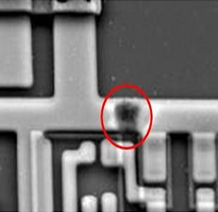Crack Texas Intrument MSP430G2121 CPU Flash Memory
Crack Texas Intrument MSP430G2121 CPU Flash Memory and extract embedded firmware from Texas instrument MSP430G2121 microcontroller after restore flash heximal from msp430g2121 microprocessor;

The MSP430™ CPU has a 16-bit RISC architecture that is highly transparent to the application. All operations, other than program-flow instructions, are performed as register operations in conjunction with seven addressing modes for source operand and four addressing modes for destination operand for cracking ti msp430g2152 microcontroller fuse bit.
The CPU is integrated with 16 registers that provide reduced instruction execution time. The register-to- register operation execution time is one cycle of the CPU clock.
Four of the registers, R0 to R3, are dedicated as program counter, stack pointer, status register, and constant generator respectively. The remaining registers are general-purpose registers. Peripherals are connected to the CPU using data, address, and control buses and can be handled with all instructions by msp430g2252 microprocessor flash memory unlocking.
The instruction set consists of 51 instructions with three formats and seven address modes. Each instruction can operate on word and byte data. Table 6-1 shows examples of the three types of instruction formats; Table 6-2 shows the address modes.

